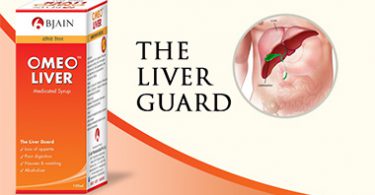 Abstract:
Abstract:
This article deals with the normal anatomy, physiology, identification of lesions, miasmatic evaluation and common remedies associated with eruptive skin lesions.
Introduction
Skin is the largest organ in the body, making up 16% of body weight. It has an aesthetic role. Basic functions of the skin are clear from the table below:
| 1. Barrier | Against chemicals, particles, microbes, uv radiation, mechanical injury, loss of body fluids |
| 2. Homoeostasis | Regulation of body temperature |
| 3. Sensation | Touch, pressure, temperature, pain |
| 4. Mobility | Provides a surface for grip |
| 5. Metabolism | Role in vitamin d production |
| 6. Immunity | Outpost for immune surveillance |
| 7. Psychology | Sexual attraction, self-image |
Anatomy
The histology of normal skin shows some variation in different parts of the body. In general it is composed of two layers, the epidermis and the dermis, which are separated by an irregular border. Some textbooks also describe a third layer called as sub-cutis.
- Epidermis: it is composed of five layers from base to surface:
- Basal cell layer (stratum germinatum): this layer consists of single layer of keratinocytes. Two major types of cells in this layer are melanocytes and langerhans cells.
- Prickle cell layer (stratum spinosum): this layer consists of several layers of squamous cells. The layers are flat near the surface so that their long axis appear parallel to skin surface.
- Granular cell layer (stratum granulosum): this layer consists of 1 to 3 layers of flat cells containing keratohyaline basophilic granules.
- Stratum lucidum: this layer is present exclusively in palms and soles as a thin homogenous, eosinophilic, non-nucleate zone.
- Horny layer (stratum corneum): it consists of eosinophilic layers of keratin devoid of nucleus.
- Dermis: it consists of two parts:
- The superficial pars papillaris or papillary dermis.
- The deeper pars reticularis or reticular dermis. Dermis contains fibroblasts, dendritic cells, mast cells macrophages and lymphocytes. Collagen fibres are up 70% of the dermis and give strength whereas elastin gives elasticity. Besides these structures, dermis also contains adrenal structures-sweat gland, sebaceous gland, hair follicles, arrectores, pilorum, nails, glomera and specialised nerve endings.
Criteria for identifying skin disorders
Systematic evaluation of signs and symptoms help in diagnosis, prognosis and treatment strategy. As correctly depicted “a well taken case is half cured”. For identification and classification of diseases, following schema has been accepted widely. Skin lesions have to be understood from major five headings stated below followed by explanation:
- Lesion type: This term is used to describe skin lesions are:
- Macule: a circumscribed flat area of altered colour, ≤ 1 cm diameter.
- Patch: as for macule, but larger.
- Papule: a discrete elevation of skin.
- Nodule: as for papule, but > 1 cm diameter and involving dermis.
- Plaque: a raised area of skin with a flat top, > 1 cm across.
- Vesicle/bulla: a small (≤ 1 cm)/larger (> 1 cm) blister, respectively.
- Pustule: a visible accumulation of pus in a blister.
- Weal: an evanescent discrete area of dermal oedema.
- Scale: a flake arising from the stratum corneum.
- Petechiae, purpura, ecchymosis: petechiae are flat, pinhead-sized macules of extravascular blood in the dermis; larger ones (purpura) may be palpable; deeper bleeding causes ecchymosis.
- Abscess: a localised collection of pus in a cavity.
- Burrow: a linear or curvilinear papule, caused by a burrowing scabies mite.
- Comedone: a plug of keratin and sebum in a dilated pilosebaceous orifice.
- Telangiectasia: visible dilatation of small cutaneous blood vessels.
- Crust: dried exudate of blood or serous fluid.
- Erosion: an area of skin denuded by complete or partial loss of the epidermis.
- Scar: permanent fibrous tissue resulting from healing.
- Atrophy: loss of substance due to diminution of the epidermis, dermis or subcutaneous fat.
- Stria: a linear, atrophic, pink/purple/white lesion in the connective tissue.
- Lesion configuration (secondary morphology): Configuration is the shape of single lesions and the arrangement of clusters of lesions.
- Linear lesions: take on the shape of a straight line and are suggestive of some forms of contact dermatitis, linear epidermal nevi, and lichen striatus. Traumatically induced lesions, including excoriations caused by the patient’s fingernails, are typically linear.
- Annular lesions: rings with central clearing. Examples include granuloma annulare, some drug eruptions, some dermatophyte infections (e.g. Ringworm), and secondary syphilis.
- Nummular lesions: circular or coin-shaped; example is nummular eczema.
- Target (bull’s-eye or iris) lesions: appear as rings with central duskiness and are classic for erythema multiforme.
- Serpiginous lesions: have linear, branched, and curving elements. Examples include some fungal and parasitic infections (e.g. Cutaneous larva migrans).
- Reticulated lesions: have a lacy or networked pattern. Examples include cutis marmorata and livedo reticularis.
- Herpetiform lesions: describe grouped papules or vesicles arranged like those of a herpes simplex infection.
- Zosteriform lesions: describe lesions clustered in a dermatomal distribution similar to those of herpes zoster.
- Texture: Some skin lesions have visible or palpable texture that suggest a diagnosis.
- Verrucous lesions: an irregular, pebbly, or rough surface. Examples include warts and seborrheic keratoses.
- Lichenification: thickening of the skin with accentuation of normal skin markings; it results from repeated scratching or rubbing.
- Induration: deep thickening of the skin, can result from edema, inflammation, or infiltration, also by cancer. Indurated skin has a hard, resistant feeling. Induration is characteristic of panniculitis, some skin infections, and cutaneous metastatic cancers.
- Umbilicated lesions: have a central indentation and are usually viral. Examples include molluscum contagiosum and herpes simplex.
- Xanthomas: are yellowish, waxy lesions, may be idiopathic or may occur in patients who have lipid disorders.
- Distribution: Following things have to be considered while considering distribution as various dermatological diseases show affinity to particular parts.
- Single or multiple
- Particular body parts are affected (e.g. Palms or soles, scalp, mucosal membranes)
- Distribution is random or patterned, symmetric or asymmetric
- Lesions are on sun-exposed or protected skin.
Psoriasis frequently affects the scalp, extensor surfaces of the elbows and knees, umbilicus, and the gluteal cleft. Lichen planus frequently arises on the wrists, forearms, genitals, and lower legs. Vitiligo may be patchy and isolated or may group around the distal extremities and face, particularly around the eyes and mouth. Discoid lupus erythematosus has characteristic lesions on sun-exposed skin of the face, especially the forehead, nose, and the conchal bowl of the ear. Hydradenitis suppurativa involves skin containing a high density of apocrine glands, including the axillae, groin, and under the breasts.
- Colour
- Red skin (erythema): different inflammatory or infectious diseases. Cutaneous tumours are often pink or red. Superficial vascular lesions such as port-wine stains may appear red.
- Orange skin: hypercarotenemia, a usually benign condition of carotene deposition after excess dietary ingestion of beta-carotene.
- Yellow skin: jaundice, xanthelasmas and xanthomas, and pseudoxanthoma elasticum.
- Green fingernails: pseudomonas aeruginosa infection.
- Violet skin: cutaneous hemorrhage or vasculitis. Vascular lesions or tumours, such as kaposi’s sarcoma and hemangiomas, can appear purple.
- A liliac color of the eyelids or heliotrope eruption: dermatomyositis.
- Shades of blue, silver, and gray: deposition of drugs or metals in the skin, including minocycline, amiodarone, and silver (argyria). Ischemic skin appears purple to gray in color. Deep dermal nevi appear blue.
- Black skin lesions: melanocytic, including naevi and melanoma.
- Black eschars: collections of dead skin that can arise from infarction, which may be caused by infection (e.g., anthrax, angio-invasive fungi including rhizopus, meningococcemia), calciphylaxis, arterial insufficiency, or vasculitis.
Miasmatic evaluation of skin eruptions
| Psora | Sycotic | Syphilitic | Tubercular |
| Psora has eczema and eruptions of all kinds in which drynesspredominates. Scratching eruptions followed by dry scales. Eczemas and eruptions are popular and associated with itching. Voluptuous tickling and itching which is only permanently relieved by rubbing and scratching. Sensation of burning. Unhealthy skin. < cold, in winter, undressing, > natural discharge, reappearance of suppressed eruptions. |
Subject to warts, moles, condylomata, skin tag, dermoid cyst, fibroma, lipoma, vesicular eruptions. Hyperpigmentation, melanoma. Painful skin eruptions. Urine coloured patches. < meat, humid and rainy weather, changes in weather. >dry weather, reappearance of growth, pressure. Small reddish flat vesicular eruptions which are slow to heal and recur during the menstrual period. Suppression of sycotic skin diseases affect first nerve centres of body and then vital organs. | Ulcers, abcess, necrosis, gangrene, bed sores, deep cracks and fissures in skin, depigmentation, stitch abscesses, skin cancer, burns scalds with degenerative ulceration. Sensation of rawness and soreness. When syphilitic skin is suppressed the intellect is affected causing dullness depression and lack of enthusiasm. Characterised by the discharge of offensive and spreading fluid and pus < night, summer, warmth of bed, warmth in general. > cold, abnormal discharge. | Any sin condition characterised by reccurence, periodicity, alternation or haemorrhage. Tubercular conditions are obstinate and difficult to eradicate. Urticaria, herpes, haemangiomas, pustular eczemas, venous thrombosis, varicose veins with red flushing, petechial haemorrhage, ecchymosis, purpura. Areas affected tend to be those which are subjective to much use. < night, touch, pressure, thinking of complaints, undressing, milk greasy and oily food, warmth of bed, after itching. > open air, dry weather. |
Skin group according to W H BURT
Aconitum napellus, Arsenicum album, Ailanthus, Arnica montana, Ammonium, Apis mellifica, Argentum group ,Antimonium crudum, Aloe socratina, Bryonia alba,Bromium, Belladonna, Croton tigrinum, Cantharides, Clematis, Cinnabaris, Causticum, Cistus, Dulcamara, Graphitis, Hyociamus,Hepar sulphuricum, Iodum, Iris, Nux juglans, Kali carbonicum, Lappa, Lycopodium clavatum, Lachesis mutans, Mercurius solubilis, natrum muriaticum, Opium, Petroleum, Phytolacca decandra, Rhus toxicodendron, Ranunculus bulbosus, Rumex, Sulphur, Sepia, Sarasaparila, Secale cornatum, Silicea terra, Sanguinaria, Stramonium, Thuja occidentalis, Tartarus, Taraxacum, Urtica urens, Ustilago majus
Murphy’s repertory:
Skin – eruptions
Acet-ac.acon.agar.agn.alum.alumn.am-c.am-m.ambr.anac.ant-c.ant-t.apisarg-met.arn.ars.ars-i.arund.asaf.asar.aster.aur.bar-c.bar-m.bell.bism.borx.bov.bry.calad.calc.calc-s.camph.cann-s.canth.caps.carb-an.carb-v.carbn-s.caust.cham.chel.chin.chinin-ar.chinin-s.chlor.cic.cimic.cinacist.clem.cob.cocc.coff.colch.coloc.con.cop.croc.crot-t.cupr.cycl.dig.dros.dulc.elapseuph.euphr.fl-ac.graph.guaj.hell.hep.hyos.ign.iod.ip.jug-c.jug-r.kali-ar.kali-bi.kali-br.kali-c.kali-n.kali-p.kali-s.kreos.lach.laur.led.lyc.mag-c.merc.mez.mosch.mur-ac.nat-act.nat-c.nat-m.nat-p.nit-ac.olnd.op.par.petr.ph-ac.phos.plat.plb.psor.puls.ran-b.ran-s.rheumrhod.rhus-t.rhus-v.rumx.rutasabad.samb.sars.sec.sel.seneg.sep.sil.spig.spong.squil.stann.staph.stram.stront-c.sul-ac.sul-i.sulph.tarax.teucr.thuj.tub.valer.verat.verb.viol-t.zinc.
Boger Boenninghausen Characteristic Repertory (BBCR):
Skin and exterior body – eruptions – in general
Acon.agar.agn.alum.am-c.am-m.ambr.anac.ang.ant-c.ant-t.arg-met.arn.ars.asaf.asar.aur.bar-c.bell.bism.borx.bov.brom.bry.calad.calc.camph.canth.caps.carb-an.carb-v.caust.cham.chel.chin.cic.cinaclem.cocc.coff.colch.coloc.con.croc.cupr.cycl.dig.dros.dulc.euph.euphr.ferr.graph.guaj.hell.hep.hyos.ign.iod.ip.kali-c.kali-n.kreos.lach.laur.led.lyc.m-ambo.mag-c.mag-m.mang.meny.merc.mez.mosch.mur-ac.nat-c.nat-m.nit-ac.nux-m.nux-v.olnd.op.par.petr.ph-ac.phos.plat.plb.psor.puls.ran-b.ran-s.rheumrhod.rhus-t.rutasabad.sabin.samb.sars.sec.sel.seneg.sep.sil.spig.spong.squil.stann.staph.stram.stront-c.sul-ac.sulph.tarax.teucr.thuj.valer.verat.verb.viol-t.zinc.
Synoptic key:
Skin – eruptions; tendency to
Acon.ars.bell.calc.caust.clem.dulc.graph.lach.lyc.merc.mez.nat-m.nit-ac.phos.puls.rhus-t.sep.sil.sulph.
Complete repertory:
Skin – eruptions
Abrom-a.abrot.absin.acet-ac.acetan.achy-a.acon.acon-c.act-sp.actin-a.adam.adon.aegle-f.aegle-m.aeth.aethi-a.aethi-m.agar.agar-em.agav-a.agav-t.agn.ail.alco.all-c.all-s.allox.aln.aloealth.alum.alumin.alumin-p.alumin-sil.alumn.am-c.am-caust.am-m.ambr.ambro.aml-ns.ammc.ampe-qu.amph.amyg.amyg-d.amyg-p.anac.anac-oc.anag.anan.ancis-p.androc.ane-n.ang.ange-ar.anil.ant-c.ant-n-l.ant-o.ant-s-aur.ant-t.anthraci.anthraco.antip.ap-g.aphisapisapisin.apoc.aq-mar.aq-pur.aran.aran-ix.arb.arg-met.arg-n.arist-cl.arn.ars.ars-br.ars-h.ars-i.ars-s-f.ars-s-r.art-v.arum-d.arum-i.arum-t.arund.asaf.asar.asc-t.asim.astac.aster.atis.atro-pur.aur.aur-ar.aur-br.aur-i.aur-m.aur-m-n.aur-s.aven.aza.bac.bacls-10.bacls-7.bad.bals-p.bamb-a.banis-c.bapt.bar-c.bar-i.bar-m.bar-s.barbit.bart.bell.bell-p.benz-ac.berb.berb-a.beryl.betu.bism.bix.boerh-d.bol-la.bol-lu.bomb-chr.bomb-pr.bond.bor-ac.borx.bosw-c.both.both-ax.bov.brom.bros-gau.bruc.brucel.bry.bufobufo-s.buni-o.but-ac.cact.cadm-met.cadm-s.caj.calad.calc.calc-act.calc-ar.calc-caust.calc-chln.calc-f.calc-hp.calc-i.calc-lac.calc-m.calc-p.calc-pic.calc-s.calc-sil.calen.calo.calth.camph.cann-s.canth.caps.carb-ac.carb-an.carb-v.carbn-o.carbn-s.carc.card-m.carl.casc.cassia-f.cassia-s.castm.castor-eq.cath-a.caul.caust.cedr.cench.cent.cephd-i.cere-b.cetr.cham.chaul.chel.chim.chin.chinin-ar.chinin-pur.chinin-s.chlf.chlol.chlor.chloram.chlorpr.choc.chol.chr-s.chrys-ac.chrysar.cic.cimic.cimx.cinacinnb.cist.cit-v.citl-vg.clem.cob.cob-n.coc-c.cocacocc.coch-o.cod.coff.colch.coleus-a.coloc.com.con.conch.conv.cop.cor-r.corn.corn-a.corn-f.corn-s.cortico.cortiso.corv-cor.cory.cosmo.crat.croc.crot-c.crot-h.crot-t.cub.cund.cupr.cupr-act.cupr-ar.cupr-o.cupr-s.cur.curc.cycl.cymbop-ci.cyn-d.cypr.cyt-l.daph.des-ac.dig.dios.dip.dol.dros.dulc.dys.echi.echi-p.elae.elapselat.elec.elmenemetin.ephe.equis-a.equis-h.erech.eric-vg.erig.erio.eryth.eucal.eug.euon.euon-a.eup-per.euph.euph-cy.euph-l.euphr.eupi.fago.falco-pe.ferr.ferr-ar.ferr-i.ferr-m.ferr-ma.ferr-p.ferr-pic.ferul.fil.fl-ac.foll.form.form-ac.formal.frag.frax.fuli.fum.gaert.gal-ac.galeg.gali.galph.gamb.gast.gels.genist.gent-c.gent-l.ger-ro.germ-met.gins.glon.glyc.gnaph.goss.gran.granit-m.graph.grat.grin.guaj.guan.guar.guare.gunp.gymne.haliae-lc.hallham.harp.heclahed.hedeo.helia.hell.helo.helon.hep.hip-ac.hipp.hippoz.hist.hom-g.hurahydr.hydr-ac.hydrc.hydrog.hyos.hyper.ichth.ign.ignis-alc.ind.indg.indol.ins.inul.iod.iodof.ip.irid-met.irisiris-foe.jab.jac-c.jac-g.jatr-c.jatz.jug-c.jug-r.juni-c.juni-v.kali-act.kali-ar.kali-bi.kali-br.kali-c.kali-chl.kali-cy.kali-hp.kali-i.kali-m.kali-n.kali-p.kali-s.kali-sil.kalm.kam.kiss.kolakosenkreos.kres.kurch.lac-ac.lac-c.lac-cp.lac-d.lac-del.lac-e.lac-lup.lac-v.lach.lachn.lact-v.lam.land.lappalars-arg.lat-h.laur.lavand-o.led.lepr.levist.lil-t.lim.limen-b-c.limest-b.lina.linu-u.lipp.lith-c.lob.lob-c.lob-e.lob-p.lol.loxo-recl.luf-b.lyc.lycps-v.lys.m-ambo.m-arct.m-aust.mag-c.mag-m.mag-p.mag-s.maland.manc.mand.mang.mang-act.mangi.mant-r.marb-w.med.medus.melit.menis.menth.meny.meph.merc.merc-act.merc-ar.merc-br.merc-c.merc-cy.merc-f.merc-i-f.merc-k-i.merc-n.merc-pr-a.merc-pr-r.merc-sul.merc-tn.merl.mez.micr.mill.mim-mi.moni.morg-g.morg-p.morph.mosch.mucormur-ac.murx.musamut.mygal.myric.myris.nabal.najanaphtin.narc-ps.nast.nat-act.nat-ar.nat-br.nat-c.nat-cac.nat-f.nat-hp.nat-m.nat-p.nat-s.nat-sal.nat-sil.neonnicc-met.nit-ac.nit-m-ac.nuph.nux-m.nux-v.nyct.oci-sa.oena.ol-an.ol-j.ol-myr.olnd.op.oper.orig-v.osm.ov.ox-ac.oxyg.ozonepaeon.pall.par.parth.ped.pers.pert.petr.ph-ac.phase.phel.phlor.phos.phys.physal-al.phyt.pic-ac.picea-e.pieri-b.pilo.pimp.pin-s.pip-m.pip-n.pitu-a.pitu-p.pixplan.plat.platan-oc.plb.plb-chr.plb-i.plect.plumbg-eu.podo.polyg-h.polyg-pe.pop.pop-cand.porc-m.pot-a.pot-t.prim-f.prim-o.prim-v.prot.prun.pseuts-m.psil.psor.ptel.pull-g.puls.puls-n.pyrog.querc-r.quill.rad-br.ran-b.ran-s.raph.rat.ratt-norv.rauw.rham-cath.rham-f.rheumrhod.rhus-a.rhus-d.rhus-r.rhus-t.rhus-v.rob.rubu-fr.rumx.russ.rutasabad.sabalsabin.sacch-a.sal-ac.salv.samars.samb.samb-c.sang.sanic.sanic-eu.santin.sapin.sapo.sapo-so.sarcol-ac.saroth.sarr.sars.scab-s.scol.scor.scroph-n.sec.sed-ac.sedi.sel.semp.senec.seneg.senn.sep.serp.sieg.sil.skook.solsol-a.sol-ni.sol-t.sol-t-ae.solid.spect.sphing.spig.spira.spong.squil.stann.staph.staphycoc.stel.stict.still.stram.streptom-s.stront-c.stront-n.stroph-h.stry-ar.stry-p.stry-xyz.strych-g.sul-ac.sul-i.sulfa.sulfon.sulfonam.sulo-ac.sulph.sumb.syc.syph.tab.tamrnd.tarax.tarent.tarent-c.tax.telatell.tep.ter.tere-ch.term-a.term-c.tet.teucr.thal.thal-s.theather.thlas.thuj.thymol.thyr.til.titan.tor.trif-p.trig-f-g.tril-p.trinit.trios.tritic.trom.tub.tub-a.tub-m.tub-r.tung-met.ulm-r.upa.ur-ac.uran-met.uran-n.ureaurin.urt-u.ust.uvav-a-b.vac.valer.vario.verat.verat-v.verb.verbe-h.verbe-o.verin.vero-o.vesp.vinc.viol-o.viol-t.vip.voes.wies.x-rayxan.xero.zinc.zinc-act.zinc-m.zinc-o.zinc-phic.zinc-s.zinc-val.zing.ziz.
Synthesis:
Skin – eruptions
Acet-ac.acon.acon-c.aeth.agar.agn.agri.alum.alum-sil.alumn.am-c.am-m.ambr.anac.ang.ant-c.ant-t.anthraci.apisaq-mar.aran.arg-met.arn.ars.ars-i.ars-s-f.arund.asaf.asar.aster.aur.aur-s.bar-c.bar-m.bell.bism.borx.bov.brom.bry.calad.calc.calc-i.calc-s.camph.cann-s.cann-xyz.canth.caps.carb-an.carb-v.carbn-s.caust.cham.chel.chin.chinin-ar.chinin-s.chlor.chord-umb.cic.cimic.cinacist.clem.cob.cocc.coch.coff.colch.coli.coloc.con.cop.cor-r.crat.croc.crot-t.cub.cupr.cupr-act.cupr-ar.cycl.cystein-l.dig.dros.dulc.elapsery-m.euph.euph-a.euphr.fago.falco-pe.ferr.fl-ac.fum.germ-met.gink-b.graph.guaj.guare.hell.hep.hyos.ign.iod.ip.jug-c.jug-r.kali-ar.kali-bi.kali-br.kali-c.kali-i.kali-m.kali-n.kali-p.kali-s.ketogl-ac.kreos.lac-ac.lacer.lach.lact.lappalaur.led.lunalyc.m-ambo.m-arct.m-aust.mag-c.mag-m.mang.meny.merc.mez.morb.morg.morg-p.morph.mosch.mur-ac.musca-d.nat-ar.nat-c.nat-m.nat-ox.nat-p.nat-pyru.nat-s.nicotam.nit-ac.nux-m.nux-v.olnd.op.ox-ac.par.petr.ph-ac.phos.phys.pixplat.plb.prot.psor.puls.ran-b.ran-s.rheumrhod.rhus-t.rhus-v.ric.rumx.rutasabad.sabin.samb.sarr.sars.sec.sel.seneg.sep.sil.solid.spig.spong.squil.stann.staph.stram.stront-c.suis-hep.suis-pan.sul-ac.sul-i.sulph.suprar.syph.tarax.tax.tell.tep.teucr.thiam.thuj.thymol.tub.valer.verat.verb.vero-o.viol-t.wies.zinc.zinc-p.
Conclusion:
The skin forms the largest component of the body. Timely analysis of the signs and symptoms of unhealthy skin can help in treatment.
Reference
- Macleod J, Douglas G, Nicol F, Robertson C. Macleod’s Clinical examination. Edinburgh: Churchill Livingstone / Elsevier; 2013.
- Hahnemann S, Tafel L, Hughes R, Dudley P. The chronic diseases. Philadelphia: Boericke & Tafel; 1896.
- Mohan H. Textbook of pathology.
- Ralston S, Penman I, Strachan M, Hobson R. Davidson’s principles and practice of medicine.
- Speight P. A comparison of the chronic miasms.pg80-85





